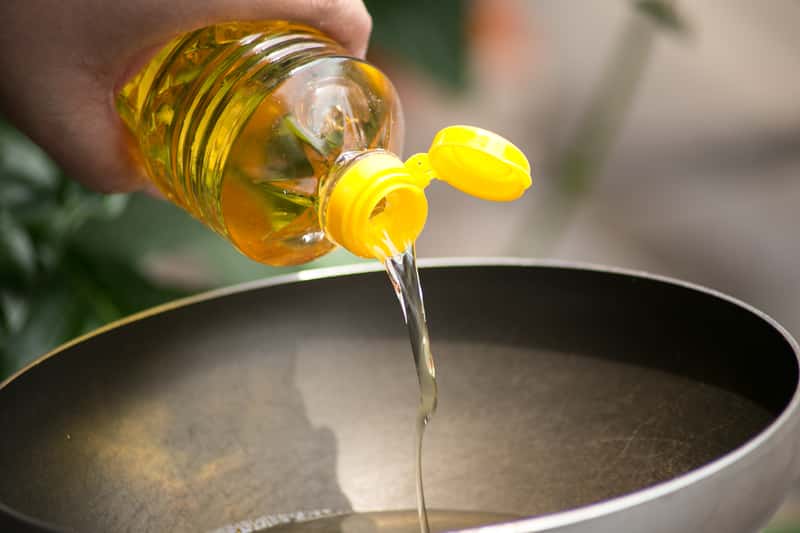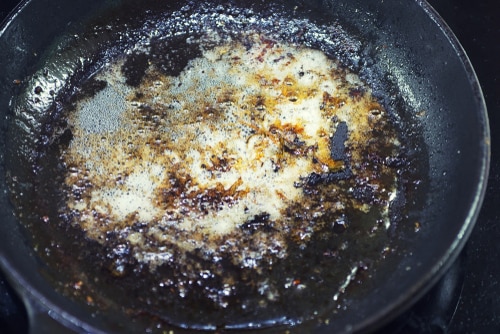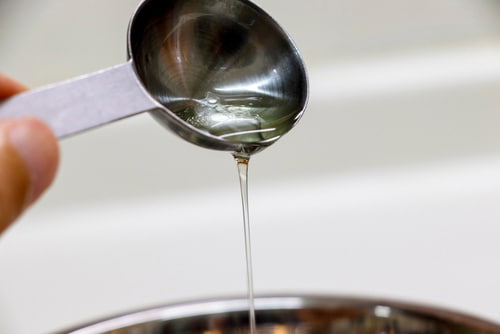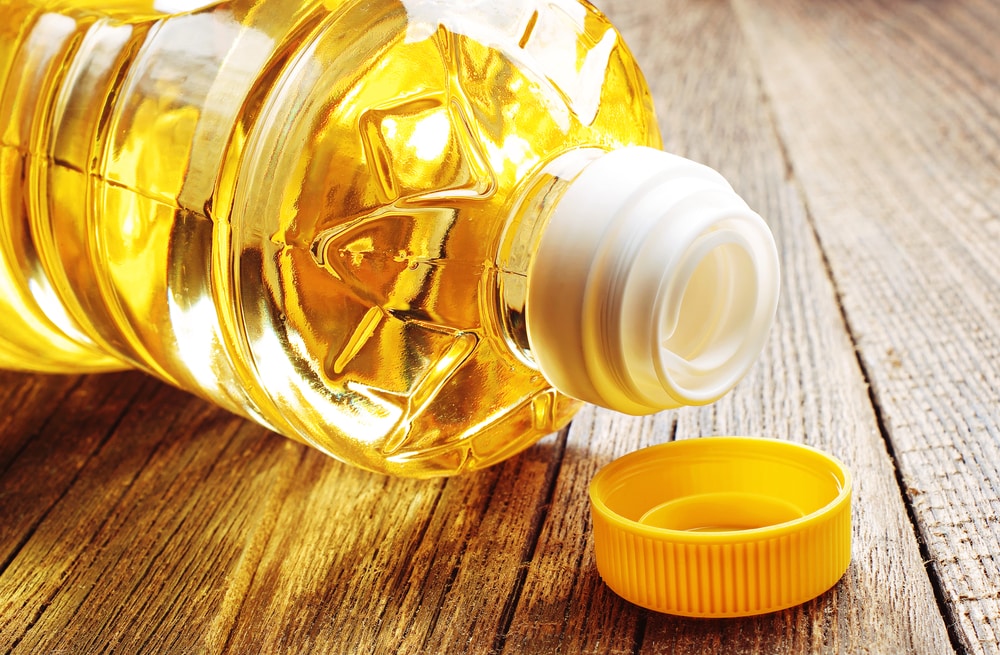
Vegetable oil is considered by many to be one of the healthiest forms of oil. It allows you to have the perfect combination of low fat and cholesterol. That means it’s perfect to use for cooking, frying and even baking.
However, if you regularly cook with vegetable oil, you may have noticed that your oil appears to be cloudy. This is most often the case in instances where the oil is being reused. Is this something to be concerned about? Fortunately, not!
What Exactly is Vegetable Oil?
Generally, vegetable oil isn’t made using only one type of vegetable. Instead, it can be produced from a wide range of seeds, nuts and vegetables. That said, it can easily be used in moderation to prepare all the other healthy foods you consume as part of a balanced diet.
For the most part, vegetable oil is excellent for cooking and frying and doesn’t alter the original taste of the food you’re preparing.
Reasons For Cloudy Vegetable Oil
There are three major reasons why vegetable oil can become cloudy. We have compiled these reasons as well as a few possible solutions to keep your oil from going cloudy.
- Oxidation
One of the major reasons for your vegetable oil turning cloudy is as a result of oxidation. When this happens, the color of your oil slowly starts to darken, and the texture appears to become richer. This in turn makes your vegetable oil look cloudy.
The reason this happens is that the oxygen in the air reacts with the fats in your oil which turn it dark and cloudy.
While there isn’t much you can do to prevent oxidation, keeping your vegetable oil in an airtight container with a properly sealed lid will reduce most of the oxidation.
Opened but unused oil should always be closed to avoid contamination from bacteria. Reused oil should be stored once it has cooled down after cooking.
- Cooling Off
Another common reason vegetable oil turns cloudy has to do with the temperature. Since the oil is primarily made up of fats, these can turn white or solidify as the cool starts cooling down.
As this happens, your vegetable oil may appear as though it’s getting cloudy, having some sort of haze, or showing signs of solidifying particles in the oil. If this happens with unused oil, it means that your oil is not stored in a cool enough place.
To check if the temperature is the reason your vegetable oil is becoming cloudy, slightly shake the container. If the oil moves slower than usual, it’s a clear indication that the vegetable oil is getting cloudy as a result of cooling temperatures.
This is the natural process for oil as it cools down, so there’s no cause for concern. As long as the oil is stored correctly, it can stay in this state until you need to use it.
For unused oil, simply move it to a cooler, darker place. If you’re re-using oil, it will return to its original liquid state once you start heating it. You will be able to use it as normal.
- Storage Method
The ideal solution to keep vegetable oil from turning cloudy is to ensure that you’re storing it correctly. This means, placing it in a sealed container with as little interaction with air as possible. Use the handy tips listed below to ensure that your vegetable oil is stored correctly:
- Don’t refrigerate your vegetable oil or it will solidify and if not in a sealed container, will absorb any odors in the fridge
- Store the oil in an airtight container such as a glass bottle with a secure lid
- A dark place that doesn’t get any direct sunlight but is still at room temperature would be the ideal setting (a cupboard or pantry shelf would be a good suggestion here)
- Ensure that the area is also dry, as too much moisture in the air may cause mold to form on top of the oil
Storing your vegetable oil following these guidelines should prevent it from becoming cloudy or developing a haze-like texture
Is It Safe to Use Cloudy Vegetable Oil?
It’s perfectly normal to wonder if it’s safe to use cloudy vegetable oil. If you aren’t familiar with the product or its processes, you might even think the oil has become spoiled—especially if there are even solid bits of oil floating around!
If you’re sure that there has been no exposure to bacteria and that the oil is only experiencing oxidation or cooling off, then it’s still safe to use. For the most part, vegetable oil should be safe to use for quite some time.
How Long is Vegetable Oil Good For Once Opened?
Vegetable oil is generally good for anywhere between a few weeks to several months. Of course, it depends on how it is being stored (if it’s unused) and what you are using it for (if you’re reusing it). The quality of the oil also plays a huge role in extending the shelf life.
Can Vegetable Oil Go Bad?
It’s important to note that vegetable oil can go bad. Depending on the age, quality, storage methods and what you’re using it for, re-using vegetable oil can eventually make it turn rancid.
How do You Know if Oil Has Gone Bad?
Unopened, unused oil will last a very long time if it is stored correctly. However, since many people reuse vegetable oil, it’s important to know when it has gone bad.
The golden rule to stick to that will help you determine whether unopened or reused oil has gone bad has to do with its smell. If vegetable oil has a bitter, musty, or sour odor, it means it has gone bad and should be discarded.
How Often Can You Reuse Vegetable Oil?
The quality of vegetable oil degrades every time you reuse it. With that said, it’s important to smell the oil before using it. Also, if you’re going to reuse your oil, don’t mix the oil that you use for fish with the oil that you use for red meat.
This will affect the taste of your food and make the oil spoil faster. Rather have separate glass bottles that you have labeled. Be sure to add the date first used and the food you used it for.
Is There a Better Alternative to Vegetable Oil?
Many food experts recommend switching from cooking with vegetable oil to using shortening.
This is primarily because shortening can be stored in canning jars or can even be vacuum sealed for long-term storage. To use, you simply have to melt the required amount of shortening and reuse as needed.
Summary
Opened, but unused vegetable oil shouldn’t turn cloudy if it has been stored in a cool, dry place in an airtight container. Alternatively, used oil will easily turn cloudy as it comes into contact with air or as it cools down.
Simply store this oil correctly and when you use it again, it will return to its liquid state. Keep track of the number of times you reuse the oil and ensure that you perform the smell test before each use. Lastly, never use oil that smells rancid or sour.




